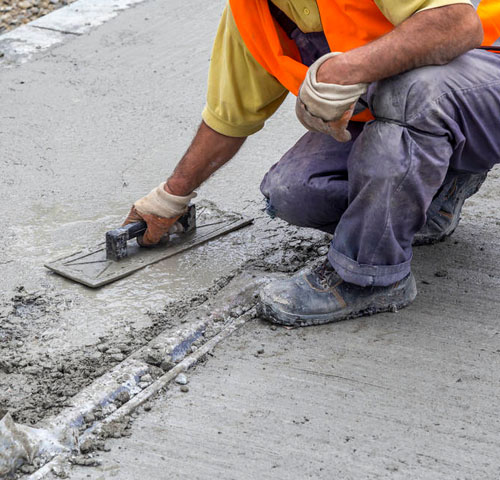Seeing large cracks in your concrete? Stop waiting and get the concrete expansion joint repair you need before it’s too late! People often wait too long and then are forced to replace their concrete instead of repairing it. Don’t waste the money you’ve invested in your property by ignoring these crucial signs!
What Exactly Is A Concrete Expansion Joint?
A concrete expansion joint, also known as a control joint, is a deliberate break in the concrete installed during the pouring process. These joints are strategically placed to allow for expansion and contraction caused by temperature changes, preventing cracks from forming randomly throughout the concrete.
In larger structures like bridges and parking garages, the expansion joint may include a small gap, further accommodating shifts in weight or extreme weather.
While earthquakes are a common concern in other parts of the country, Maryland’s climate presents its own challenges. The freeze-thaw cycle during Maryland winters puts significant stress on concrete, making expansion joints crucial for preventing structural damage.
Four Signs That Your Property Needs Expansion Joint Repair
For the safety of your property and to catch damage in its early stages, it’s essential to be aware of the signs of expansion joint damage. Here are the top four indicators that it’s time to call a concrete repair contractor:
- Grass Growing in Your Expansion Joints: If you see grass sprouting from your joints, it’s a clear sign that the concrete has been neglected for too long. This indicates significant deterioration, and the grass will only exacerbate the problem, potentially leading to a large separation and structural compromise.
- Large Bumps Developing at an Expansion Joint: When you notice your concrete structure pushing up or heaving, it’s time to seek professional help. Early intervention may only require a sealant to address this issue. However, ignoring the problem will inevitably lead to cracked concrete repair.
- Corners Chipping or Cracking: This stage follows the heaving of expansion joints. If you missed the early warning signs, the damage would progress. When you see surface chipping and cracking, you may need to consider cold patching or replacing the concrete joints altogether.
- Small Expansion Joints Turning into Large Gaps: This often occurs in newly poured structures where excessive water during mixing leads to a larger-than-intended gap. If this occurs later in the life cycle of a joint, it indicates significant structural shifts, requiring urgent consultation with a concrete expert to assess the integrity of the structure.

Why You Need Professional Help!
Concrete repair is not a DIY project. Attempting to fix expansion joints without proper expertise can compromise the safety of your property and lead to more costly problems in the long run. Only a licensed and experienced concrete contractor can accurately diagnose and repair these issues, ensuring the longevity and safety of your concrete structures.
Protect Your Investment. If You Notice Any Of These Signs, Don’t Delay – Contact Coastal, The Professional Concrete Repair Contractor Today!
